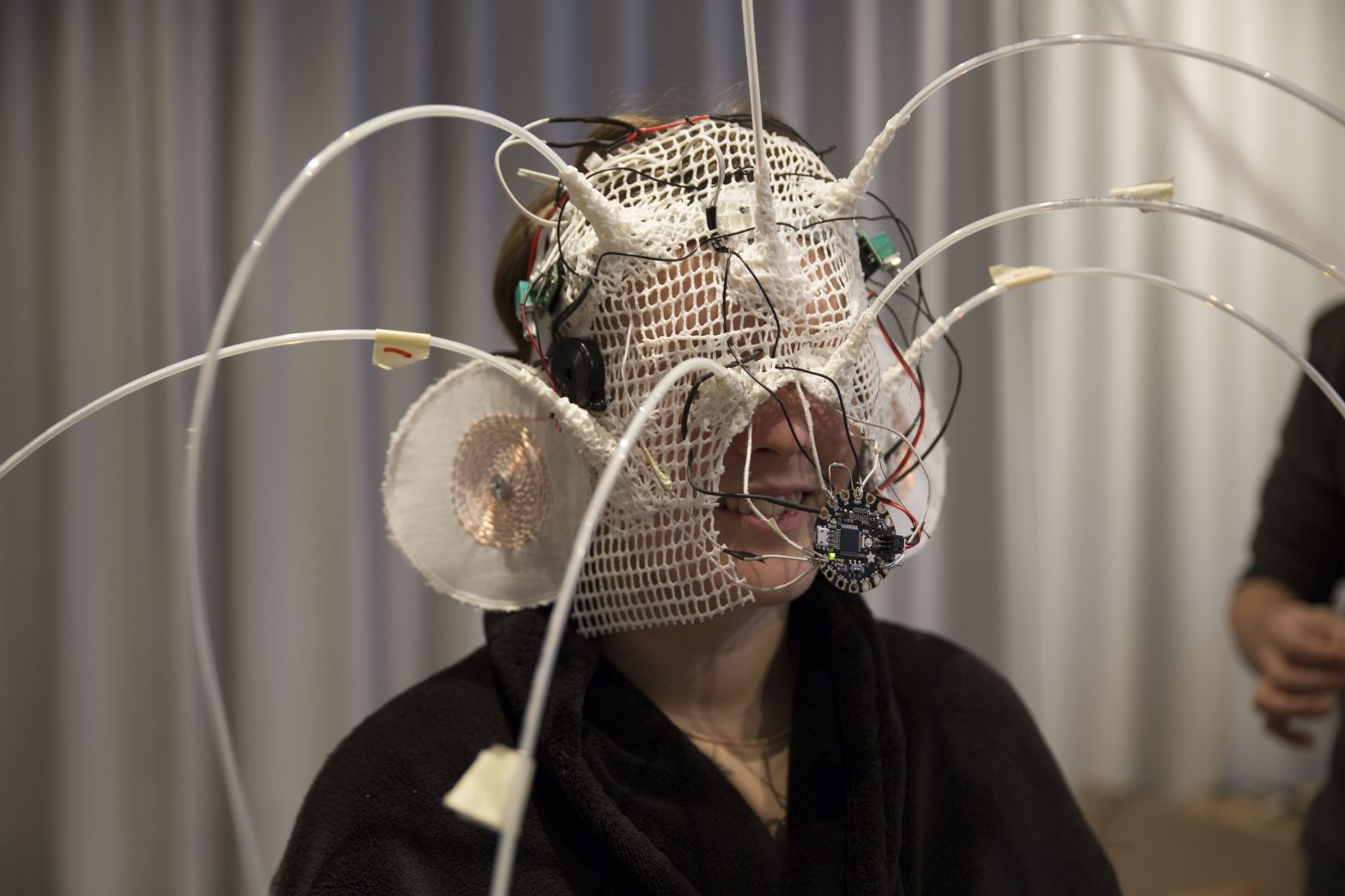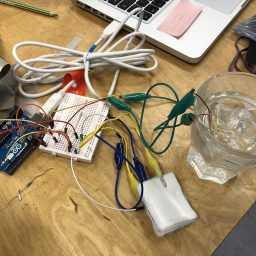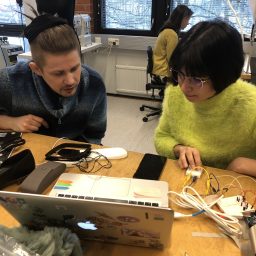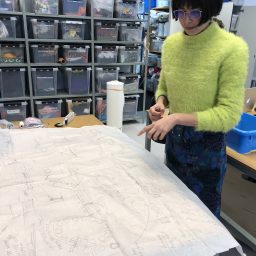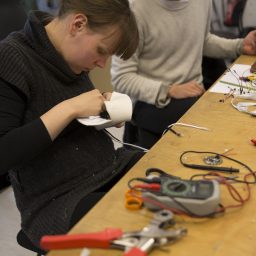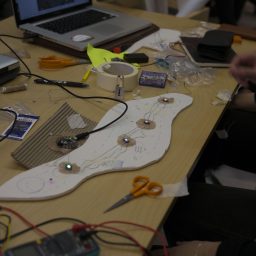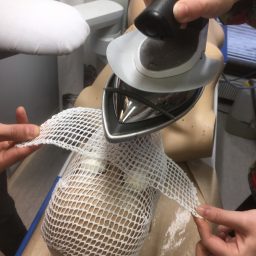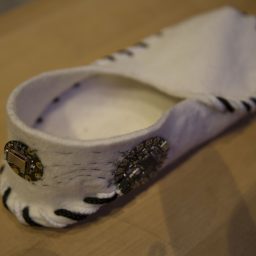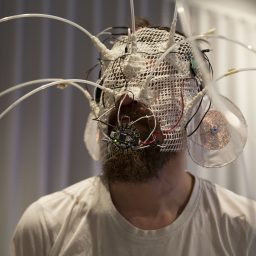At Aalto studios at Otakaari 7 students from four different backgrounds are working together to make technology, the body, and cloth work together in harmony. The course is called “Wearable Electronics” and is based on collaboration between costume design, sound design, lighting design, and choreography and is bringing Aalto ARTS and University of the Arts Helsinki together.
“Try to listen,” says Nicolina Stylianov an MA student in live arts and performance and put her ear next to a glass full of salt water to demonstrate how. The vibrations from the water is getting detected by a small sensor that makes it possible to hear them. She smiles surprised: “it’s working”.
The facilities make it possible
Next, to Nicolina projects, two other teams are experimenting with touch sensors, inflatables and electromagnetism. The students work in two different studios at Otakaari 7: the sewing studio and the FabLab. The sewing studio provides the space for cutting, sewing, and fitting, while the FabLab gives the students the opportunity to explore technology prototyping. “All the different facilities at the Studios gives a great opportunity to develop our projects” explains Nicolina Stylianov, and ads that she was surprised by the many possibilities.
Collaboration beyond faculties
The students are not only getting challenged by working with new disciplines but also working in multi-discipline teams. A light design student called Lauri Lundahl points out: “This course and the facilities gives us endless possibilities and it could, therefore, be interesting for most students to be a part of the projects”. He is a part of a team with a choreographer and costume design student. Many of the students have never worked with electronics before, but the multi-discipline teams create an environment for peer-to-peer learning, since the students have different approaches to the task.
An untouched potential of costume design
The students attending the Wearable Electronics only have tree week to produce a piece of performer-technology and the course is, therefore, focused on experimentation and exploring. The end presentation is held at Kipsari Backstage where the 5 teams presented their work. The students that had not worked with electronics before, had in only three weeks made remarkable pieces and showed that there is a great potential in the future of wearable electronics.
